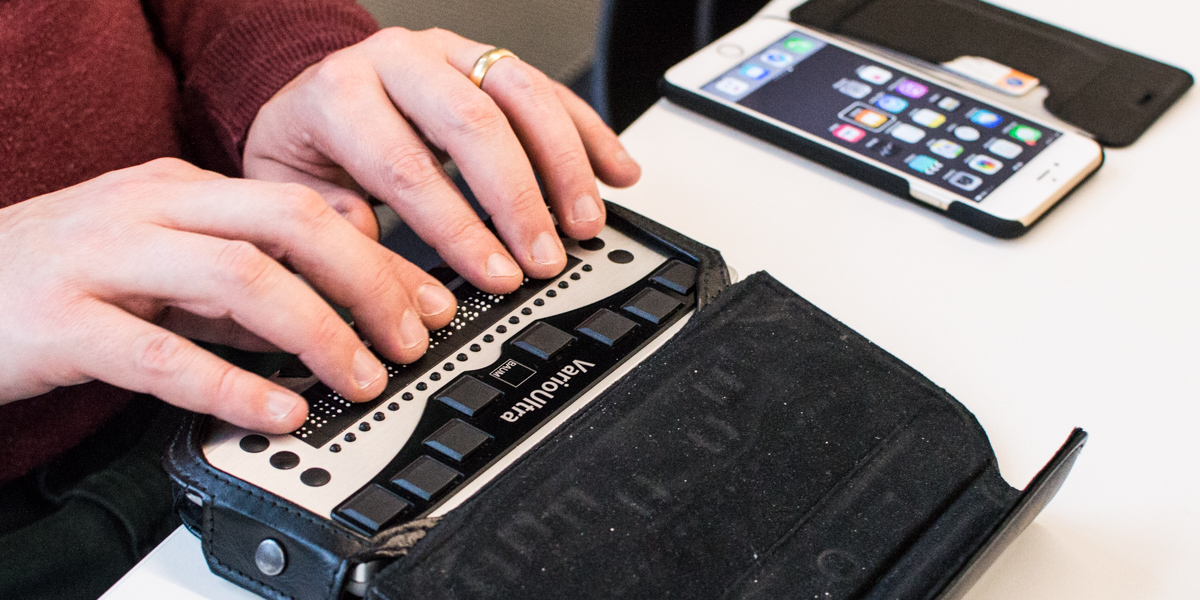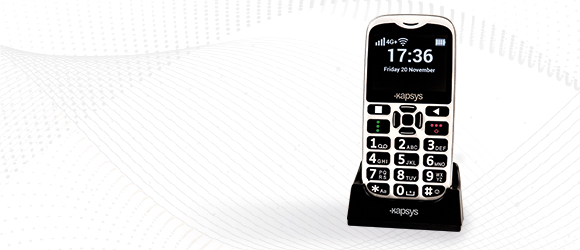Enhancing Lives With Advanced Assistive Instruments for the Blind
The combination of innovative assistive tools for the blind is transforming just how individuals experience their environments and interact with their communities. What does this evolution indicate for the future of assistive innovation and its duty in equipping individuals?
Introduction of Assistive Instruments
Assistive gadgets for the blind encompass a varied array of innovations and tools made to enhance freedom and improve the high quality of life for individuals with visual problems. These tools cater to various requirements, from navigating and movement to interaction and daily task administration.
Among the primary classifications of assistive devices consists of flexibility help, such as white canes and overview pet dogs, which help customers navigate their environments securely. Electronic traveling help, equipped with sensing units and audio feedback, additionally play a considerable duty in movement enhancement.
In addition, tools that aid with everyday living tasks, such as flexible kitchen tools, Braille labels, and talking watches, encourage individuals to perform tasks independently. Communication help, consisting of screen visitors and Braille screens, help with access to details and make it possible for individuals to involve effectively with the electronic globe.
Moreover, low-tech services like amplifying glasses and large-print products remain crucial for lots of users. Collectively, these assistive gadgets serve not only as useful devices but additionally as vital enablers of freedom, promoting higher participation in a globe that frequently prioritizes sighted experiences. Their assimilation into life is vital for promoting inclusivity and boosting total wellness for those with visual disabilities.
Innovative Technologies in Usage
Development in modern technology has considerably changed the landscape of devices available for people with aesthetic disabilities. Amongst the most significant innovations are smart glasses incorporated with increased truth, which offer real-time navigating help and things recognition. These tools take advantage of progressed electronic cameras and fabricated intelligence to supply acoustic cues, boosting the user's spatial awareness and autonomy.
Additionally, mobile applications have actually arised as powerful resources, allowing users to recognize money, reviewed message aloud, and navigate strange environments via spoken instructions. Devices such as Braille display screens and refreshable Braille tools remain to develop, using seamless connection with smart devices and computers, thus boosting communication and accessibility to info.
Wearable technology, including smartwatches outfitted with voice-activated functions, further encourages users by promoting fast access to notifications and notifies without needing visual engagement. Responsive maps and 3D printing are additionally obtaining grip, providing substantial depictions of spaces that help in orientation and flexibility training.
Jointly, these cutting-edge modern technologies not just improve the every day lives of visually damaged individuals but likewise foster better freedom, inclusivity, and interaction with the broader neighborhood, thus reshaping assumptions of ease of access. (Screen readers for the blind)
Personal Stories of Empowerment
Empowerment typically arises from personal experiences that highlight the transformative effect of technology on people with aesthetic impairments. Take, for example, the story of Sarah, a young artist that reclaimed her passion for painting with the usage of a clever cane geared up with barrier discovery. This device not only facilitated her flexibility but instilled a newly found self-confidence, enabling her to browse public areas individually and seek her imaginative undertakings.

These stories emphasize the extensive impacts that advanced assistive devices can carry day-to-day live. By making it possible for individuals to overcome barriers, modern technology promotes a feeling of freedom and self-respect. Such empowerment tales work as a testament to the potential of advancement, highlighting just how the right devices can considerably boost Go Here lifestyle and open doors to new opportunities for those with aesthetic impairments.
Benefits of Advanced Solutions
How can progressed solutions fundamentally enhance the lives of people with visual impairments? The integration of innovative modern technology right into assistive tools significantly transforms day-to-day experiences for those affected by vision loss. These advanced remedies provide unprecedented freedom, making it possible for users to navigate their atmospheres with confidence. Tools such as clever canes geared up with sensing units, navigating applications, and wearable technology are made to give real-time feedback, improving spatial awareness and lowering the dangers related to mobility.
Moreover, progressed assistive innovations foster social addition by promoting communication and interaction. Voice-activated gadgets and applications enable individuals to accessibility info and engage with their surroundings separately, damaging obstacles that previously hindered their participation in educational, specialist, and social setups.
Additionally, the modification and versatility of these solutions satisfy the diverse needs of individuals, thereby boosting their total lifestyle. Improved performance, such as things acknowledgment and text-to-speech capacities, encourages people with his comment is here aesthetic problems to perform tasks that they might have once located challenging. Ultimately, progressed assistive modern technologies not just improve independence and safety and security yet additionally advertise self-respect and self-worth, permitting users to lead meeting lives.
Future Patterns in Assistive Tech
As innovation remains to evolve, the landscape of assistive gadgets for the blind is poised for impressive advancements that will better enhance access and independence. Arising fads in assistive modern technology suggest a change towards enhanced assimilation of expert system (AI) and device knowing, making it possible for devices to adapt to private user needs in real-time. These advancements are anticipated to assist in even more instinctive navigating systems that can identify barriers and give audio responses, dramatically improving outdoor wheelchair.
Furthermore, the advancement of wearable technology, such as clever glasses furnished with augmented truth, will certainly allow users to get contextual details about their surroundings, thereby enhancing their spatial awareness. In addition, advancements in haptic technology guarantee to produce tactile responses gadgets, enabling individuals to view details through touch, improving understanding and communication with their environment.
Telecommunication advancements are also paving the means for remote assistance services, where experienced experts can give guidance by means of video clip calls, making magnetic eyeglasses certain assistance is easily accessible. As these trends unravel, the future of assistive tools for the blind will definitely promote higher autonomy, equipping individuals to navigate their world with self-confidence and simplicity.

Final Thought
The assimilation of innovative assistive tools for the blind represents a significant improvement in cultivating self-reliance and improving high quality of life. By using innovative modern technologies, these devices encourage users to navigate their settings with greater self-confidence and autonomy. As the field remains to advance, continuous r & d will likely produce a lot more advanced services, additionally transforming the lived experiences of individuals with visual problems and advertising a greater sense of addition within culture.
The integration of innovative assistive tools for the blind is transforming how people experience their surroundings and interact with their areas. The integration of cutting-edge modern technology into assistive tools substantially transforms everyday experiences for those influenced by vision loss.As modern technology proceeds to evolve, the landscape of assistive tools for the blind is poised for impressive innovations that will further boost availability and freedom. Emerging fads in assistive modern technology suggest a change toward enhanced combination of fabricated knowledge (AI) and equipment learning, enabling devices to adapt to private customer requires in real-time.The integration of sophisticated assistive devices for the blind represents a considerable improvement in cultivating freedom and enhancing high quality of life.